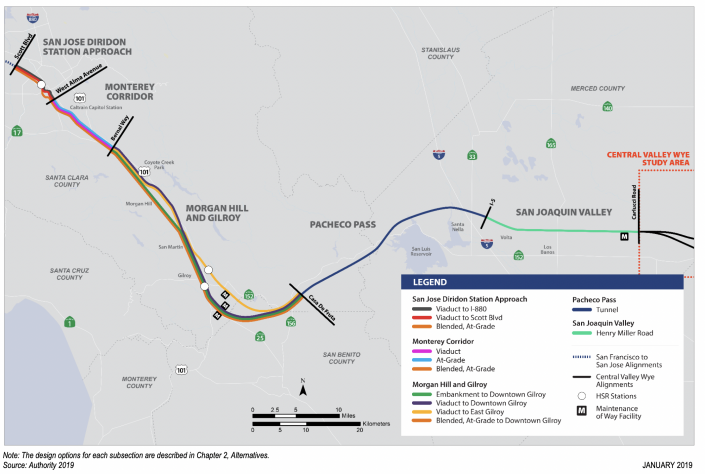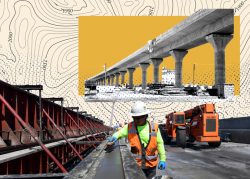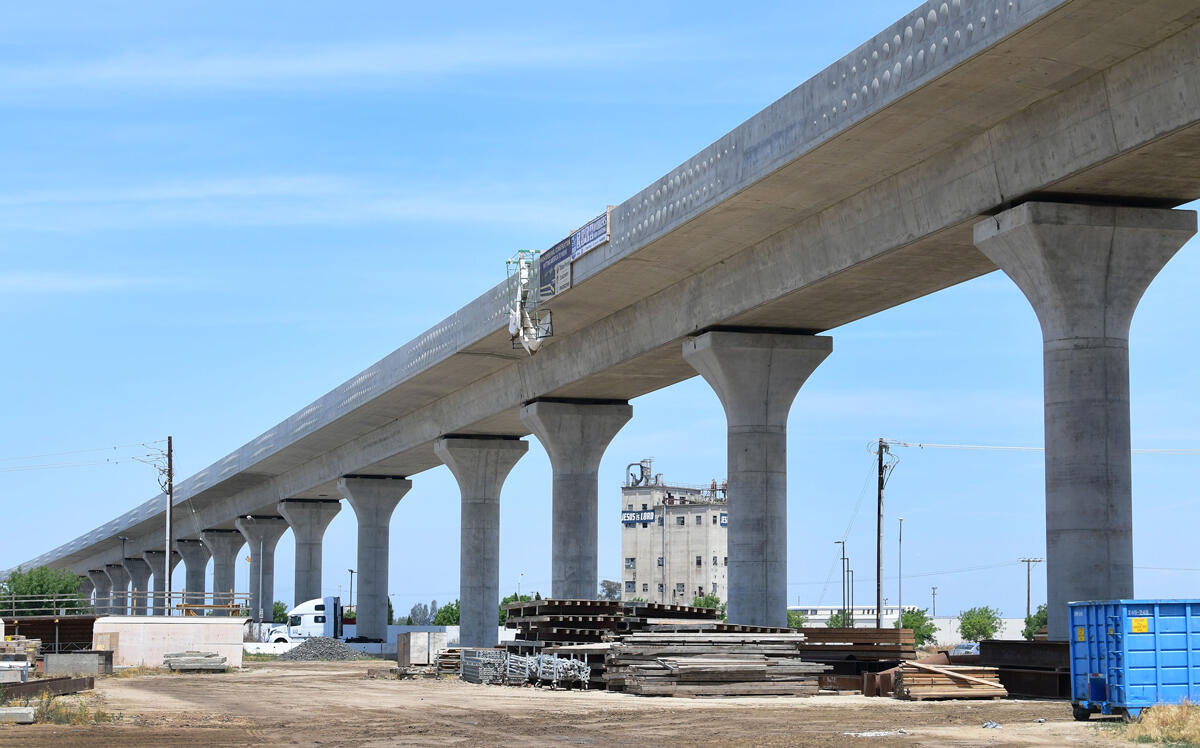The price tag to build a high-speed rail connection between the Central Valley and the Bay Area jumped to $19 billion, about $5 billion more than an estimate the state agency in charge disclosed in a business plan last month.
California’s high-speed rail authority blamed accelerating inflation and higher land costs for the surge, according to the Mercury News. The agency detailed the increase in a Feb. 25 report that completed the environmental clearance process for the project’s link to the Bay Area. It’s a 90-mile route connecting Merced County in the Central Valley to San Jose, running through the city’s core and on to Gilroy before entering a planned 13.5-mile tunnel in the Pacheco Pass that crosses an active fault line.
The tunnel would be Northern California’s longest underground railway passage and is also driving up the entire project’s cost because it’s the most difficult segment to build, the Mercury News said. It would surpass Canada’s nine-mile Mount Macdonald Tunnel as the longest of its kind in North America.

(Source: California High-Speed Rail Authority)
“The whole program is a series of megaprojects,” the rail authority’s Boris Lipkin told the newspaper. “And out of our megaprojects, this is probably the biggest of them.”
Cost estimates have spiked since state voters approved $10 billion in 2008 for a high-speed rail service that could get you to San Francisco from Los Angeles in less than three hours. The oft-delayed project has since become one of the state’s most controversial and expensive undertakings: Its total cost now stands at up to $105 billion.
The authority is short on funds for the Central Valley-Bay Area rail link and any other part of the project save for a 119-mile stretch that’s already under construction and will connect Merced in the San Joaquin Valley to Bakersfield, north of Los Angeles. California Governor Gavin Newsom is seeking to address the shortfall by allocating $4.2 billion in bond funds, although some leading Democrat lawmakers are against using that money for the Bay Area segment, the Mercury News said.
The authority is also hoping that it receives some of the $10 billion set aside for high-speed rail under President Joe Biden’s Build Back Better plan, which remains stuck in the Senate.
More trouble for the project may be on the horizon: the Loma Prieta chapter of the Sierra Club may consider taking legal action to try to stop its development, the Mercury News said. The nonprofit contends that the planned tunnel in the Pacheco Pass would, among other things, disturb sensitive wetlands, the newspaper said.
The authority’s board will discuss the environmental report in late April and is expected to choose the Merced County-San Jose route as its preferred one to bring high-speed rail to the Bay Area, the Mercury News said. Lipkin said trains will probably arrive in San Jose “later into the 2030s.”
[The Mercury News] — Matthew Niksa
Read more

